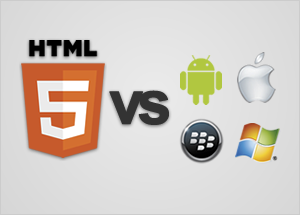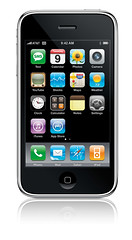Mobile: Native or Web App?
 Before trying to build a mobile app, this should be the first question you should ask yourself. And by native, I mean an app that runs on Android, iPhone, iPad, Windows Mobile, or Blackberry. And by web app, i mean something that runs in a mobile browser.
Before trying to build a mobile app, this should be the first question you should ask yourself. And by native, I mean an app that runs on Android, iPhone, iPad, Windows Mobile, or Blackberry. And by web app, i mean something that runs in a mobile browser.
Short answer: If you got deep pockets and lots of developers (like Facebook), and you want features HTML5 can not provide, go native. But really it depends on what you’re trying to do and what resources you have.
The right answer only happens after goals have been identified, both short term and long term. This blog post will not cover all the details needed to answer the question, instead it will provide a few links that cover the details. Note there is also a third option of building a hybrid apps (native apps that get the latest content from the web).
Overview:
- Infographic from mashable.com – June 2012
- Summary tables comparing of native vs mobile web – July 2012
- It’s complicated, says Forbes – September 2011
- Summary table comparing native vs web – August 2012
- Detailed Look at Future of Web Apps – March 2012
- Martin Fowler presentation – 2012 June (summary, and beware cross-platform toolkits leading to uncanny valley)
Trend towards HTML5 (aka web apps)
- HTML5 mythbusting, mozilla – Nov 2012
- Why Speckyboy chose html5 over native – July 2012
- 7 reasons why mobile web apps better for business – May 2012
- Businessinsider on the debate – Aug 2012
- Mobile Web is right answer – Sept 2012
- Web App success story: Financial Times – April 2012
Still want native
- Travel apps – Aug 2012
- Native apps can cost less, according to an online survey by 40 developers mentioned in a pdf by VDC Research – Dec 2011. The survey or types of people who filled it out are not disclosed.
Option 3: Hybrid
HTML5 Facebook Announcement, Sept 2012
- Betting TOO much on HTML5, mashable summary
- Forbes explanation
- Strategy or Execution wrong?
- branch.com discussion,
For techies: The details
- CNET under the hood, how CBS does it – Feb 2012
- 6 tools to build inexpensive mobile app – May 2012
- Single web page app overview – Nov 2011
- HTML5 mobile compatibility and Top Mobile Web Browsers, current
- Various articles on mobile web (offline usage, native/web/hybrid, etc)
I hope the links above helped. Remember not to confuse whats best for your app with what other apps do or how they do it. If you’re still not sure, one approach is to design a web app first, and if it doesn’t meet your needs (which should be fleshed out during the design phase), then go native.


